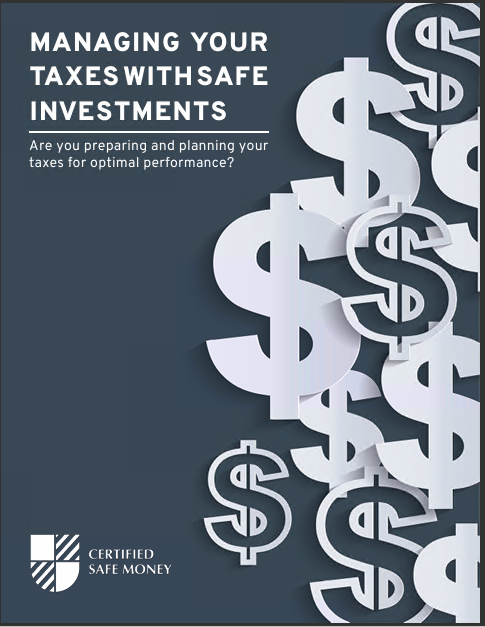Annuities Understanding the 5 Annuity Types
If you’re looking for a way to generate retirement income, there are five types of annuities that you can choose from, depending on what other benefits you might be looking for. Many annuities offer advantages in addition to an income stream, such as tax-deferred growth, market or index-linked returns, protection of principal, a death benefit for your loved ones, and even penalty-free access to your funds in the event of a terminal illness or the need to reside in a nursing home. But, with so many different types of annuities, how do you know which one is right for you? It all starts with having a good understanding of how annuities work and what you can anticipate as far as short- and long-term performance. Talking to an annuity planning professional can also help you to narrow down which type of annuity could best fit your specific objectives.
What are the 5 Types of Annuities?
Just like other financial products, the list of annuity options has continued to grow over time. Today, there are five types of annuities available in the market. These are:
- Immediate Annuities
- Fixed Annuities
- Fixed Index Annuities
- Multi-year Guarantee Annuities
- Variable Annuities
Within these annuity types, there are also different categories of annuities, including:
- Immediate Annuities
- Deferred Annuities
Find the most credible, highest-rated Safe Money advisors in your area.
If you are nearing retirement or already retired, you should consider safe money because your future is too bright to risk. With an immediate annuity, you can contribute funds to the account, and you can begin receiving income right away (or at some point within the next 12 months). These annuities are geared towards those who are retired (or who will soon be retired), which is why many investors “rollover” funds from their employer-sponsored retirement plan or IRA (Individual Retirement Account) into an immediate annuity. The primary purpose of single premium immediate annuities, or SPIAs, is paying income over a set period of time (such as 10 or 20 years), or even for the remainder of your lifetime, no matter how long you may need it. Deferred annuities can pay income, starting at a time in the future. A deferred annuity has two distinct phases. These include the accumulation phase and the distribution phase. With a deferred annuity, you can either make one single contribution or many contributions over time. During its accumulation phase, the money inside of a deferred annuity is allowed to grow tax-deferred. This means that there is no tax due to the gain in the account until the withdrawal time. Then, during its distribution phase – when the contract is “annuitized” a deferred annuity pays out income for either a set period or for the life of the annuitant (i.e., the income recipient). In fact, most annuities have a number of income payout options to choose from, such as:
- Period Certain – Period certain will pay income for a certain, pre-established period of time, like ten or twenty years.
- Life Only – Life Only will continue to pay income for the remainder of your lifetime, regardless of how long that is.
- Life with Period Certain – Life with period certain pays income for your life. However, if you pass away within a certain time period, such as ten or twenty years, the income payments will continue to a named beneficiary.
- Joint and Survivor – With the joint and survivor income option, income from the annuity will continue for the remainder of two individuals’ lives.
A deferred annuity can be fixed, fixed indexed, or variable. There are also multi-year guarantee annuities and deferred income annuities, or DIAs, that don’t start paying out an income stream until many years (30 or even 40) down the road. Fixed Annuities Fixed annuities will typically earn interest at a rate that the insurance company sets. These types of annuities will not lose value – even if there is a significant downturn in the stock market. In return for this principal’s safety, the rate of return on a fixed annuity may be quite low. Many retirees use fixed annuities because of their guarantees. A fixed annuity can also pay out a set rate of income for a certain time period or even for the remainder of the annuitant’s life. The amount of this income is usually fixed, so you know how much to expect coming in. Fixed Index Annuities A fixed index annuity is a type of fixed annuity. The primary difference between a fixed index annuity and a regular fixed annuity is the way in which the return is calculated. For instance, fixed index annuities track an underlying market index, such as the SP 500. (This type of annuity will also typically offer a fixed account where you can place some or all of your funds). If the return on the underlying index is positive, the annuity will be credited with a positive return – oftentimes up to a certain cap or maximum. However, if the tracked index performs poorly in a given period and earns a negative return, the annuity will not be credited with a loss. Rather, a 0% is credited for that time period. Many investors feel that a fixed index annuity provides the best of all worlds, given its principal protection and opportunity for growth. It is important to note that the return on fixed index annuities is often “capped” at a certain percentage of the underlying index returns. Fixed index annuities also have a distribution phase where you can receive regular income. There can be some flexibility with this type of annuity in that certain fixed index products allow you to turn income payments on and off based on your specific needs. You could also “customize” a fixed index annuity by adding various “riders” to the contract. Multi-Year Guarantee Annuities Another version of fixed annuities is the multi-year guarantee annuity or MYGA. With an MYGA, you can lock in a set rate of interest for a certain period of time, such as 3, 5, 7, or 10 years. The surrender charge period on MYGA annuities typically corresponds with the interest rate guarantee period. So, in most cases, if you withdraw more than 10% of the contract’s value during the guarantee period, you can be charged a surrender penalty. Oftentimes, once your guarantee period has elapsed, you have the option of renewing for another guaranteed time frame, or instead, you can take your funds out of the MYGA annuity altogether without incurring a surrender charge. Variable Annuities Variable annuities track their return based on underlying investments such as mutual funds, stocks, bonds, and other various options. (Your funds are not invested directly in the market, but rather through the insurance carrier’s “sub-accounts.”) Money inside of a variable annuity is also allowed to grow tax-deferred. This can provide the opportunity for significant growth in the account – especially if the investments are performing well. Unlike a fixed index annuity, there are not typically any “caps,” or maximums, in terms of growth potential in a variable annuity. However, there is the potential for loss if the underlying investments perform poorly. So, variable annuities can be riskier than fixed, fixed index, and multi-year guarantee annuities. Some riders may be added to a variable annuity that offers certain guarantees such as income, interest credits, and distributions. As with other types of annuities, variable annuities typically offer a variety of income payout options, as well as a death benefit that can be paid to a named beneficiary. Deferred Income Annuities (Longevity Annuities) Deferred income annuities – which are also commonly referred to as longevity annuities – can provide you with a guaranteed lifetime income that starts at a future date, up to 30 or 40 years, in some cases. A deferred income annuity, or DIA, works in a similar manner to an immediate annuity – other than the fact that the income payments do not begin immediately (or even within 12 months of purchasing the annuity). The income payments from a deferred income annuity (DIA) can often be much higher than those of an immediate annuity. One reason for this is because the annuitant’s life expectancy is typically shorter due to the income payments not starting until later in his or her life. Some insurance companies that provide deferred income annuities will also offer various riders that help you to design a product that more closely fits your needs. These riders may include benefits that increase your guaranteed income or ways to keep your purchasing power in-tact and provide you with a hedge against inflation.
Which Type of Annuity is Best for You?
Not all annuities are the same. So, even if tax-deferred growth and a future income stream fit with your financial objectives, it is still important to know which type of annuity is right for you. When choosing an annuity, it is important that you have an idea of what you want the product to do for you. For instance, are you in need of income right away? Or, are you instead looking for a way to increase your tax-advantaged savings? Your risk tolerance and expected retirement date can also be key factors in choosing the right annuity, as can your desire to leave a legacy for your loved ones. Find a financial professional who can help you to narrow down your options. Doing so can also better ensure that you’ll know what you can anticipate in terms of what the annuity will and will not do for you.













